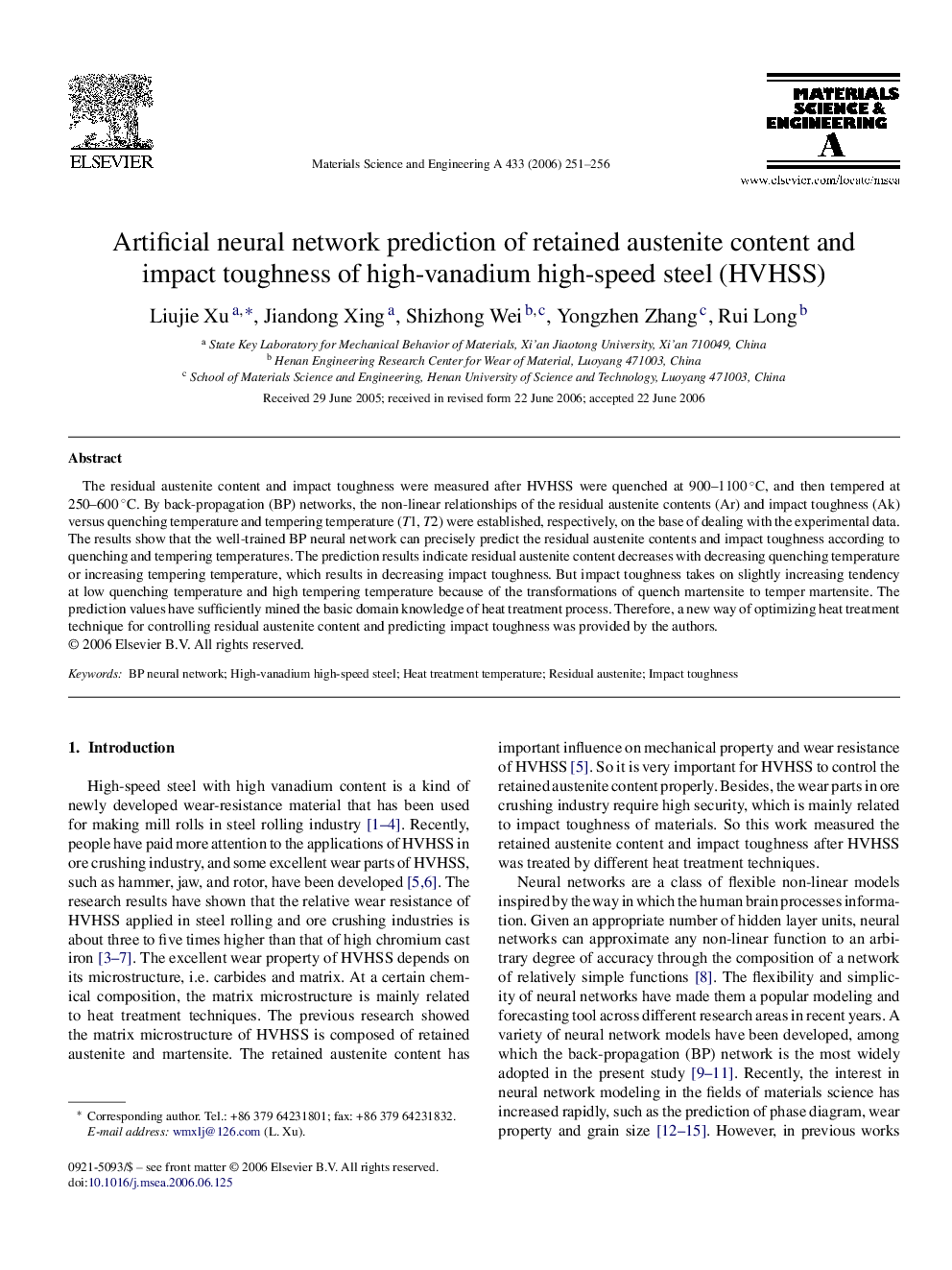| Article ID | Journal | Published Year | Pages | File Type |
|---|---|---|---|---|
| 1585234 | Materials Science and Engineering: A | 2006 | 6 Pages |
The residual austenite content and impact toughness were measured after HVHSS were quenched at 900–1100 °C, and then tempered at 250–600 °C. By back-propagation (BP) networks, the non-linear relationships of the residual austenite contents (Ar) and impact toughness (Ak) versus quenching temperature and tempering temperature (T1, T2) were established, respectively, on the base of dealing with the experimental data. The results show that the well-trained BP neural network can precisely predict the residual austenite contents and impact toughness according to quenching and tempering temperatures. The prediction results indicate residual austenite content decreases with decreasing quenching temperature or increasing tempering temperature, which results in decreasing impact toughness. But impact toughness takes on slightly increasing tendency at low quenching temperature and high tempering temperature because of the transformations of quench martensite to temper martensite. The prediction values have sufficiently mined the basic domain knowledge of heat treatment process. Therefore, a new way of optimizing heat treatment technique for controlling residual austenite content and predicting impact toughness was provided by the authors.
